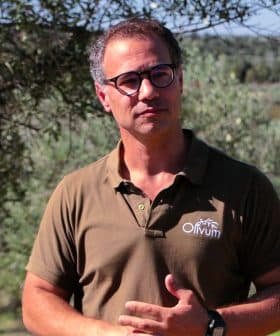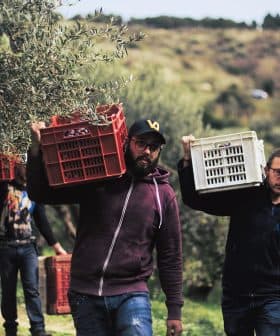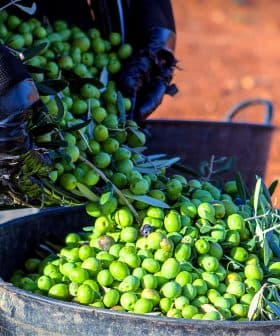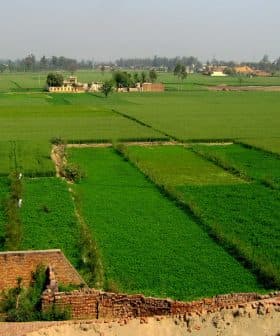How Intensive Agriculture and Olive Cultivation Impact Soil Health
While intensive agriculture degrades soil health in seasonal crops, the same cannot be conclusively said about olives.
 Bakersfield, California
Bakersfield, California  7.4K reads
7.4K readsThe 27th Conference of the Parties to the United Nations Framework Convention on Climate Change is set to focus on agriculture’s role in climate change, with concerns raised about the environmental impact of chemical and industrial agriculture. Experts are conflicted over the impact of systematic olive tree cultivation on soil health, with some arguing that high-density and super-high-density groves negatively affect biodiversity compared to traditional groves, while others emphasize the importance of sustainable practices in olive cultivation. More research is needed to determine the long-term effects of different cultivation methods on soil health and biodiversity.
The 27th Conference of the Parties to the United Nations Framework Convention on Climate Change – COP27 – is just around the corner, kicking off on November 8th in Egypt’s sunny resort town of Sharm El-Sheikh.
Among the event’s many focuses will be agriculture’s role in climate change, to which an entire day has been dedicated.
There are not many studies comparing the change in soil fertility between traditional or intensive olive groves.
And with good reason. The International Panel on Climate Change estimates that agriculture is responsible for 10 to 12 percent of global emissions and one-quarter of greenhouse gas emissions.
However, not all agriculture is created equal. The lion’s share of these emissions is associated with chemical and industrial agriculture and its immense supply chain fueled by oil and gas.
See Also:Hot Weather Weakens Plant Immune System, Study FindsWhile this type of agriculture has allowed the global population to grow exponentially from an estimated 1 billion people in the mid-19th century to nearly 8 billion today, the spoils have not been shared equitably, and the costs have been immense.
Chemical agriculture can be traced back to 1840 when Baron Justus von Liebig, a German chemist, published a monograph entitled Chemistry in Its Application to Agriculture, in which he shifted the prevailing paradigm of soil biology to soil chemistry.
His discovery allowed for the advent of industrial agriculture about 100 years later when the necessary ingredients were stockpiled in abundance after the end of World War II.
Plants require 17 essential elements to grow, but von Liebig identified the three most important ones – nitrogen, phosphorous and potassium.
While all three of these essential nutrients and the other 14 are found naturally in the soil and produced through biological processes, their concentration and presence is the limiting factor of soil fertility.
Applying NPK fertilizers (the initials of the three main elements on the periodic table) raised these limits but had many unintended, albeit foreseen, consequences. The repetitive application of these fertilizers meant crops could be grown on the same land year after year. However, the ecosystem that naturally supported life was degraded.
Intensive agriculture eliminated the previously existing symbiosis between plant roots and soil microbes. Combined with the impacts of climate change, this imbalance has resulted in a loss of 25 percent of the global insect population since 1990.
This loss of biodiversity, combined with the unnaturally dense amount of nutrients in the NPK-fertilized crops, resulted in the rise of pests.
The U.N. Food and Agricultural Organization estimates that 40 percent of global crop production – valued at about $290 billion – is now lost to pests, with the problem expected to become 10 to 25 percent worse as a result of climate change.
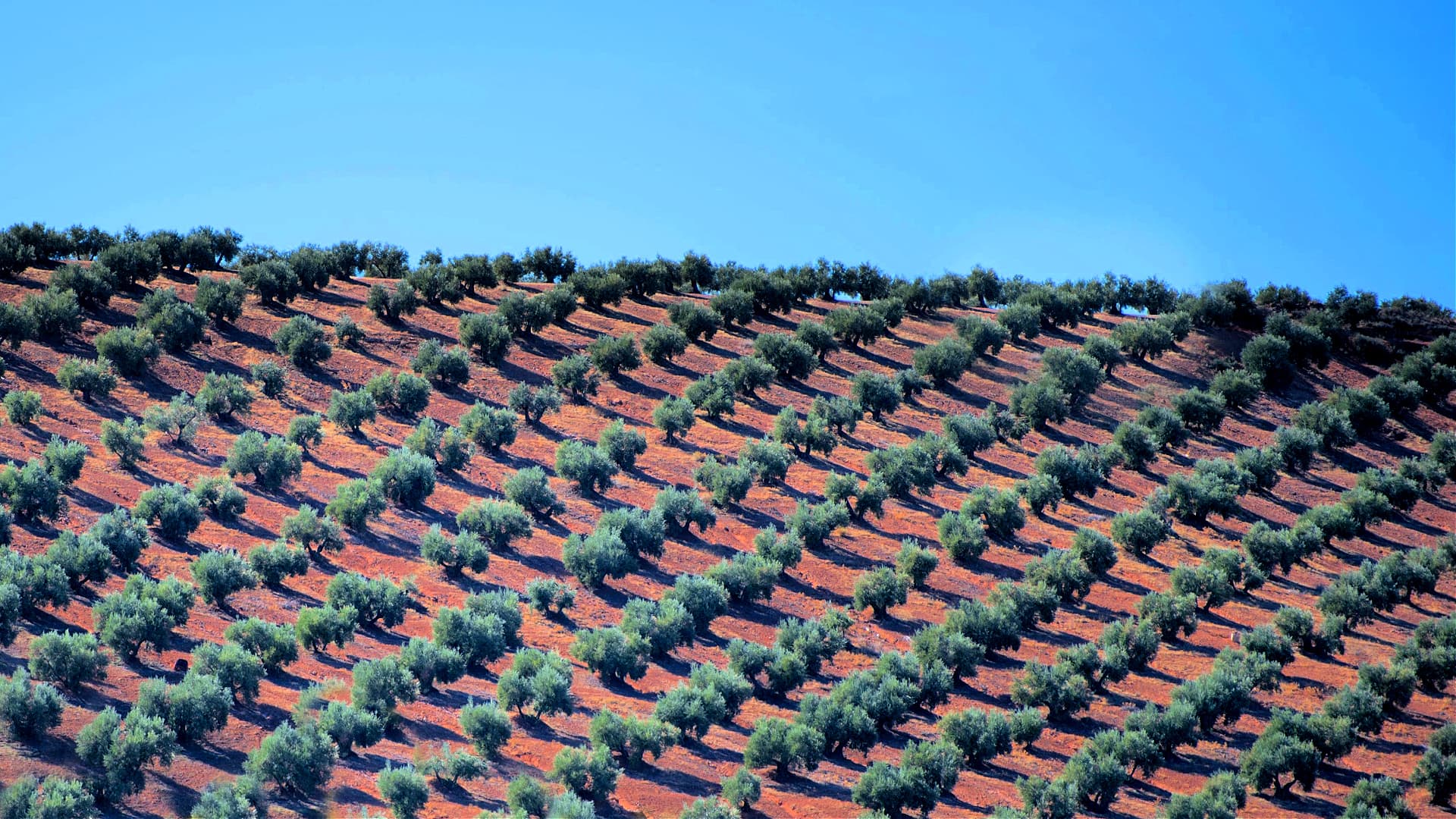
Without natural predators to maintain a balance, pest species have become more pervasive and economically damaging, resulting in the regular deployment of chemical pesticides.
Those pesticides further degraded soil health, rendering it uninhabitable without the continued use of NPK fertilizers, essentially unlearning 14,500 years of shared knowledge and experience in the space of 180 years.
The “NPK mentality,” as von Liebig’s discovery became derisively known among its critics, overly simplified soil fertility’s complex system biology.
Now some experts in the world of high-density (intensive) and super-high-density (super-intensive) olive groves are conflicted over the impact that systematic olive tree cultivation has on the soil.
One skeptic said part of the uncertainty is the lack of studies on soil health in high-density and super-high-density groves.
“There are not many studies comparing the change in soil fertility between traditional or intensive olive groves,” Roberto García Ruiz, an agricultural researcher at the University of Jaén specializing in olive cultivation, told Olive Oil Times.
“When I try to work in super-intensive groves to do this kind of comparison, [intensive olive grove owners] do not want anyone to take soil samples or do any kind of analysis,” he added. “I don’t know if it’s better or worse because I don’t have that information.”
Unlike seasonal crops, which are most associated with industrial agriculture, olives are a permanent crop. As a result, olive trees have a fundamentally different relationship with the soil.
Ruiz suspects that the permanent root structures preserve soil biodiversity and prevent erosion in ways that the roots of intensive seasonal crops do not.
He added that many high-density and super-high-density growers – by some estimates up to 90 percent – try to grow spontaneous natural vegetation between the rows of their olive trees to varying degrees of success.
See Also:Researchers Find a Way to Expedite PhotosynthesisIn a natural ecosystem, different plants fix different nutrients into the soil. For example, legumes naturally fix nitrogen, which is why many farmers alternate between wheat or corn and soybeans. However, Ruiz said leguminous plants do not grow well in high-density and super-high-density groves.
Additionally, the vast majority of high-density and super-high-density groves are fertigated, a combination of irrigation with a dissolved NPK fertilizer.
As a result, these groves have the same problem as intensive seasonal crops, with a nutrient-dense composition that attracts pests and usually requires pesticides to keep them at bay.
The environmental impact will depend on the type of pesticide used, but chemical pesticides will have the same effects on the soil as they do in intensive seasonal crops.
However, Juan Vilar, a strategic consultant who operates his own traditional and high-density olive groves, argued that soil health in olive groves is related to cultivation methods other than density.
He agrees with Ruiz that spontaneous natural vegetation in most high-density and super-high-density groves certainly helps maintain and promote soil fertility.
“When working with plant cover, the fertility of the soil is maintained and gradually enriched because it regularly adds organic matter,” he told Olive Oil Times.
Vilar acknowledged that using chemical pesticides and herbicides would also undoubtedly impact soil health but argued this is not directly tied to the cultivation method.
“The health of the soil depends on what fertilizers and chemicals are used to manage the cover crops,” he said.
“Depending on what product you use, if they are products that are very radical in their composition, the soil fertility can be affected,” Vilar added. “But it does not depend on the mode if it is intensive, super-intensive or traditional, but rather on how the soil is treated.”
There is little argument that high-density and super-high-density olive groves harbor more biodiversity than intensively cultivated seasonal crops.
However, some research has found that these olive groves negatively affect biodiversity compared with traditional groves, which impacts soil health.
While some dispute these findings, both sides agree that more research must be done. In the meantime, no one is suggesting that high-density and super-high-density groves do not have a place in the global olive cultivation portfolio.
However, Ruiz said that ensuring they are as sustainable as possible means they must be located where water is available for irrigation, a necessity for high-density and super-high-density olive groves highlighted by the current historic drought facing southern and western Europe.
The soil profile is also essential to consider, as rising temperatures fundamentally change how plants and soil interact.
“It is quite clear that taking the main climate change scenario into account, the cultivation area in Andalusia [home to the vast majority of the world’s high-density and super-high-density groves] will have to move a little bit toward the east and the north,” Ruiz concluded.
Share this article


